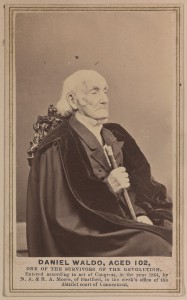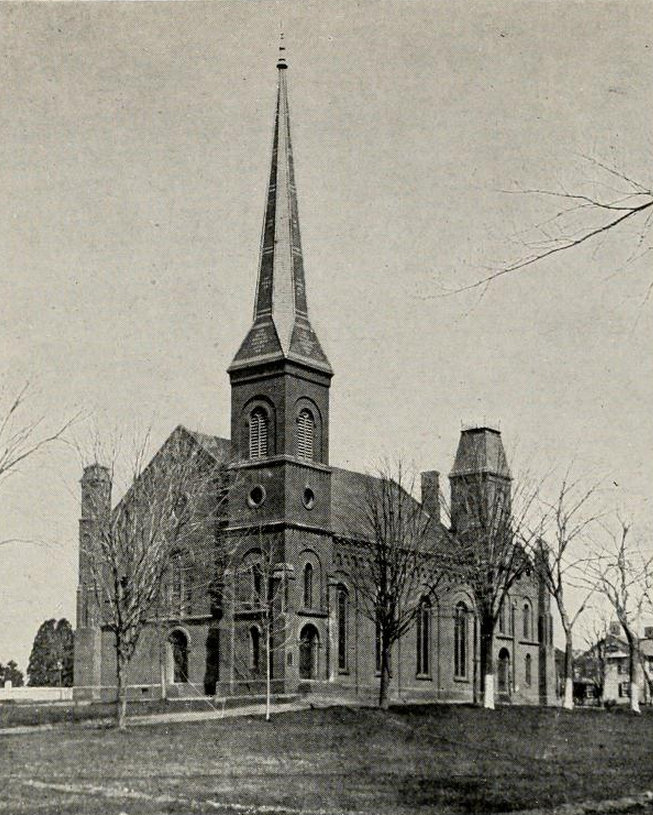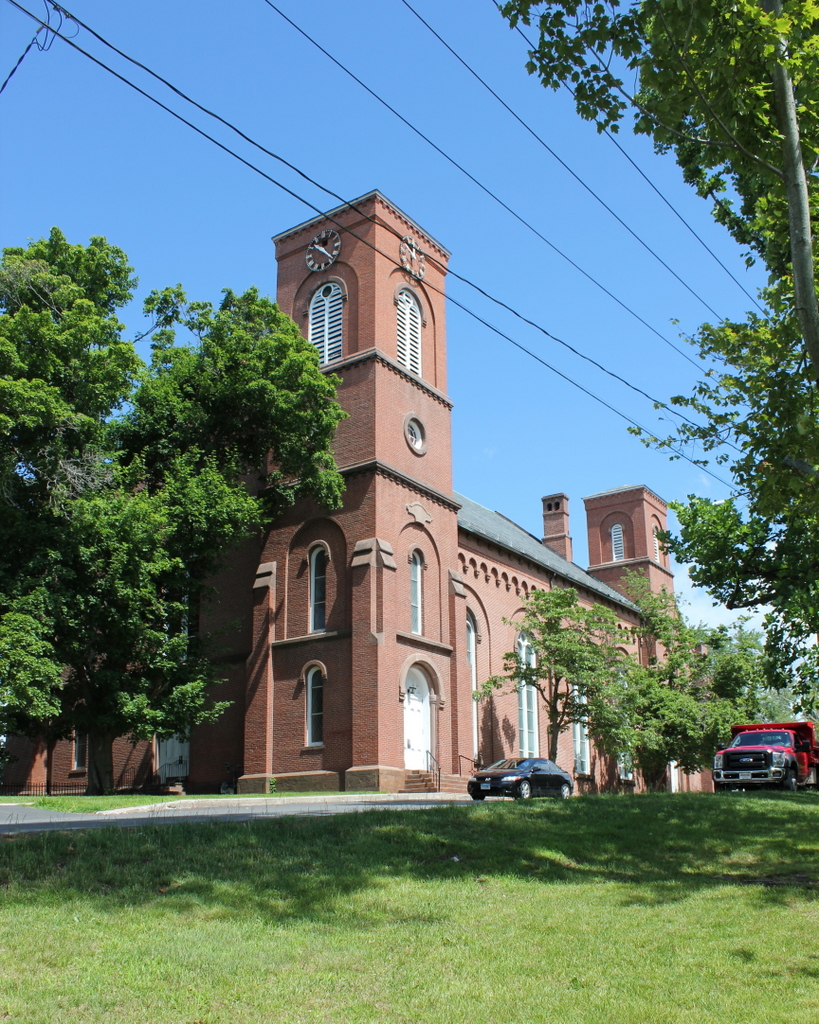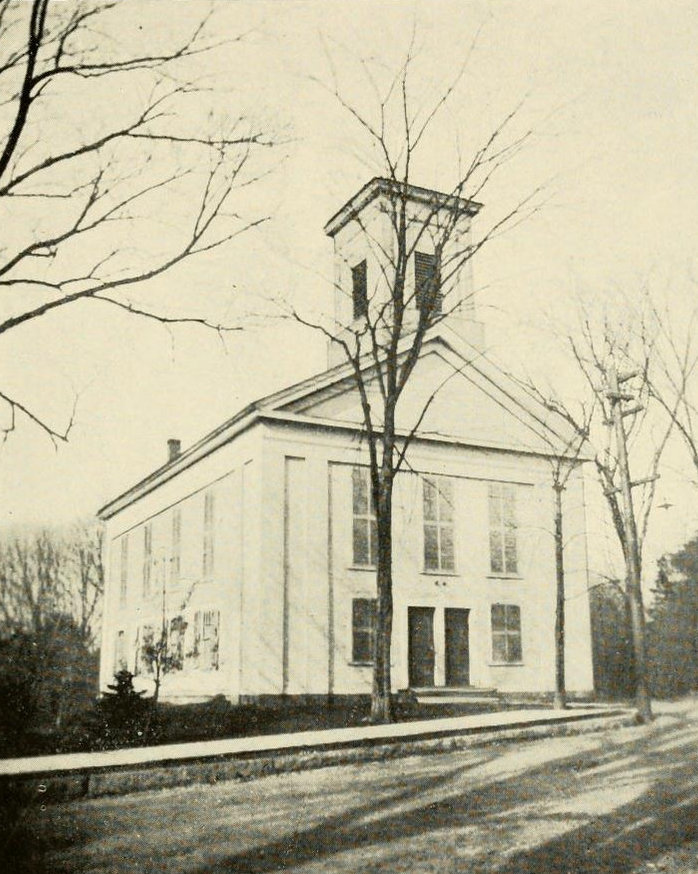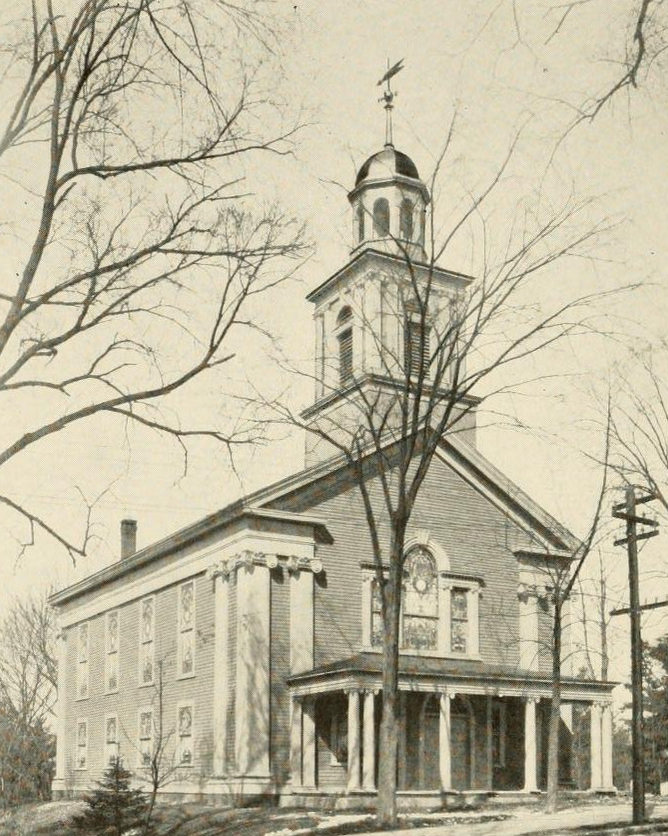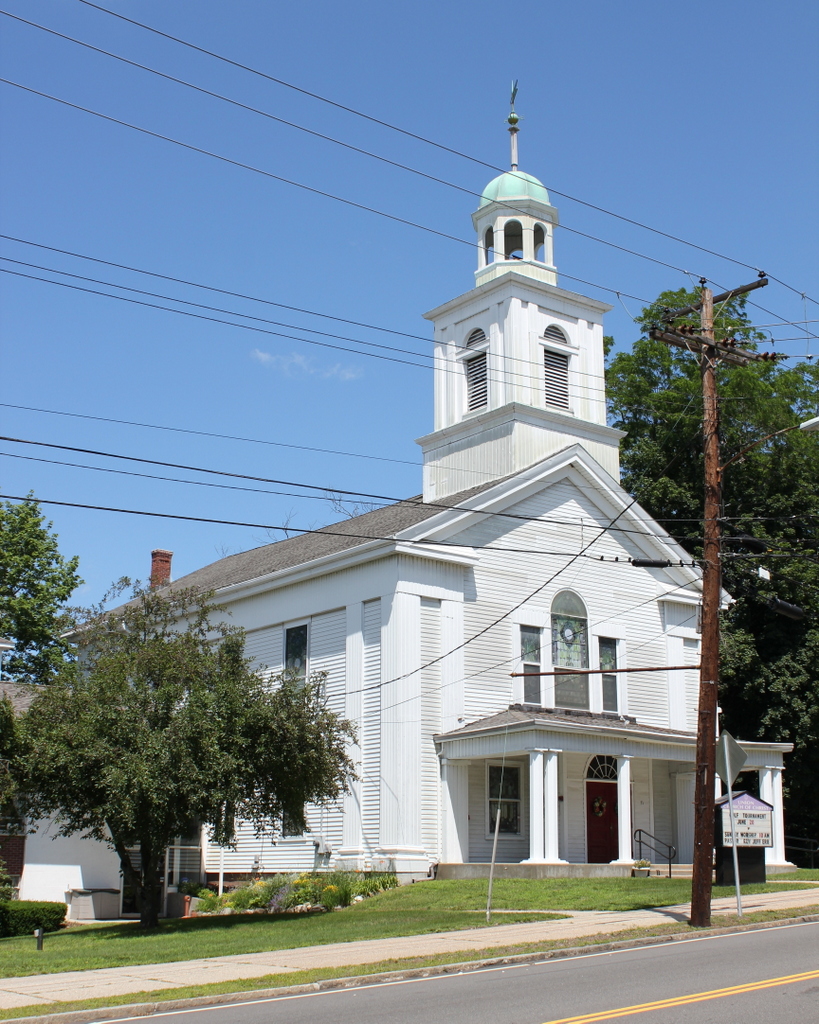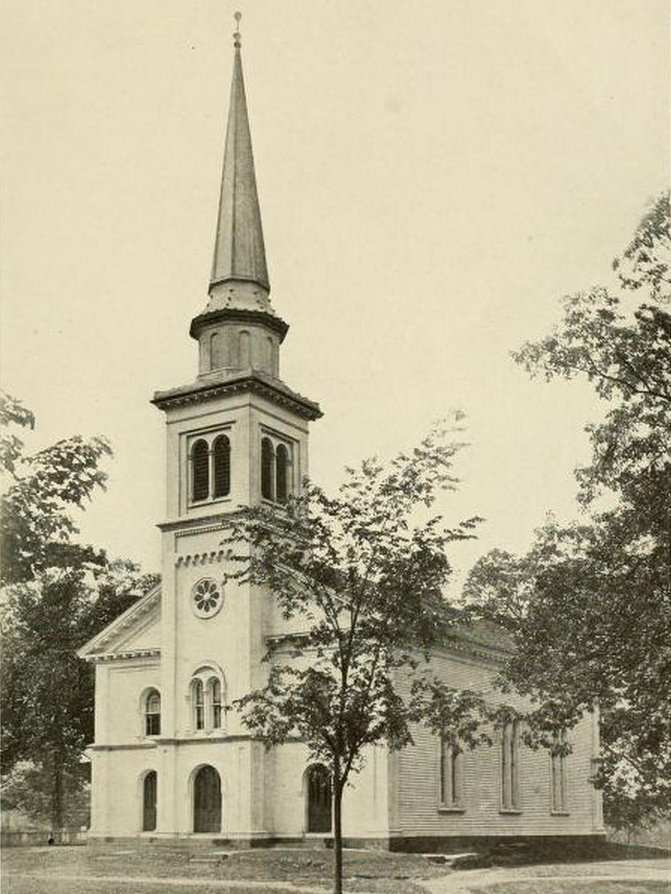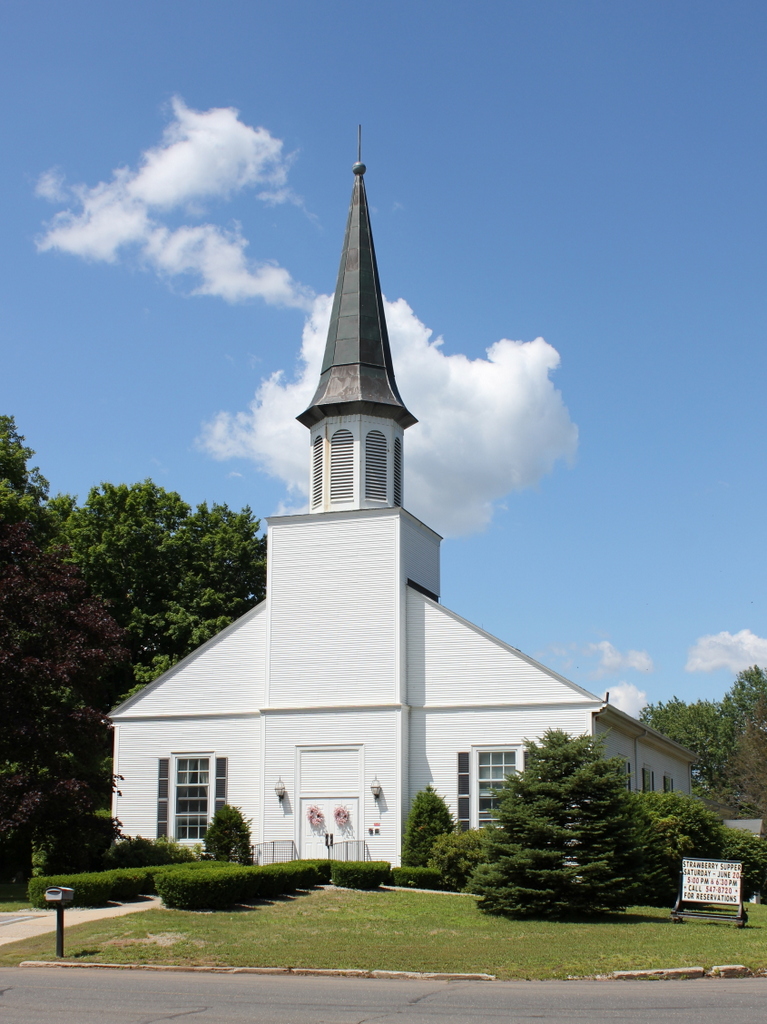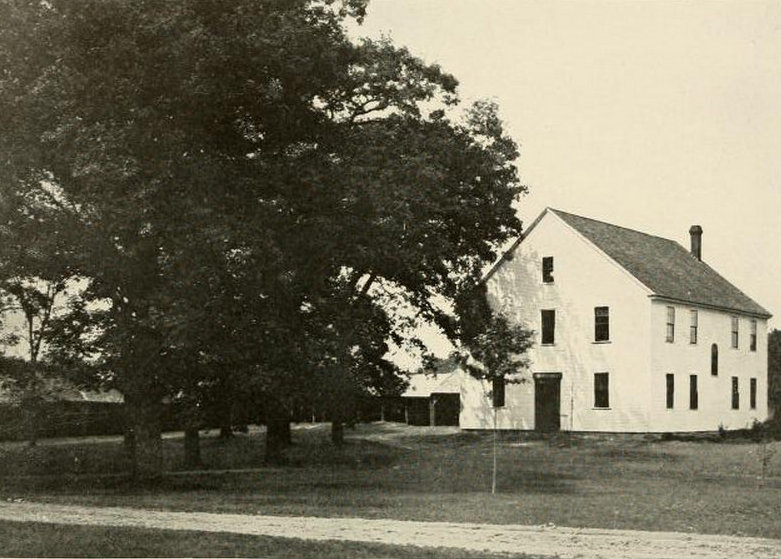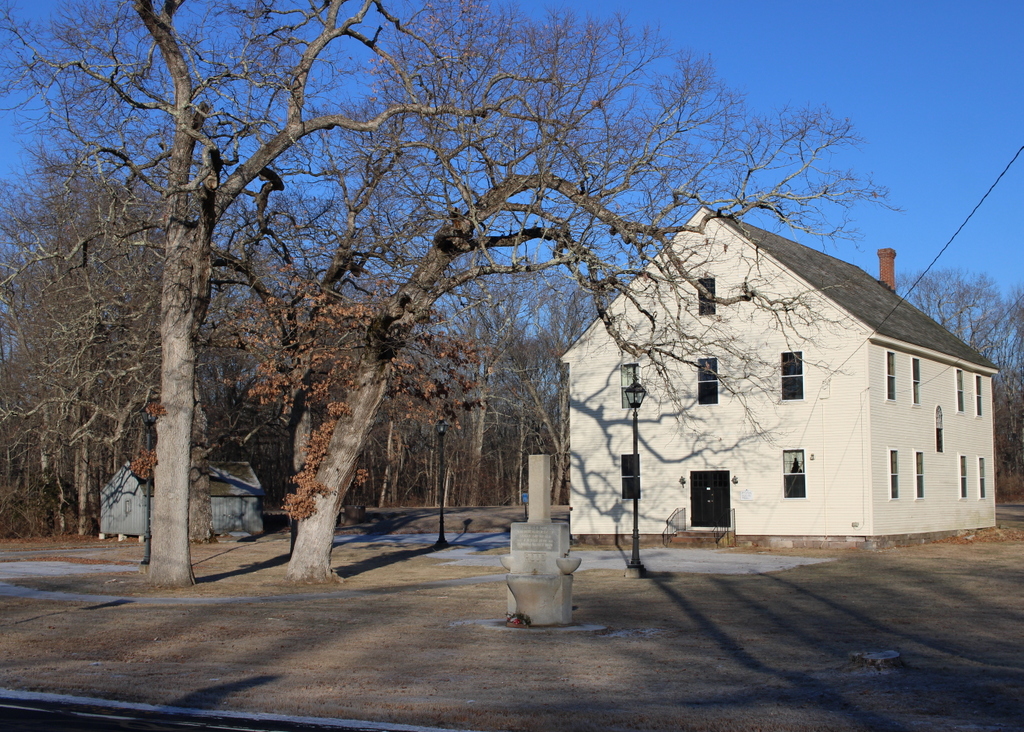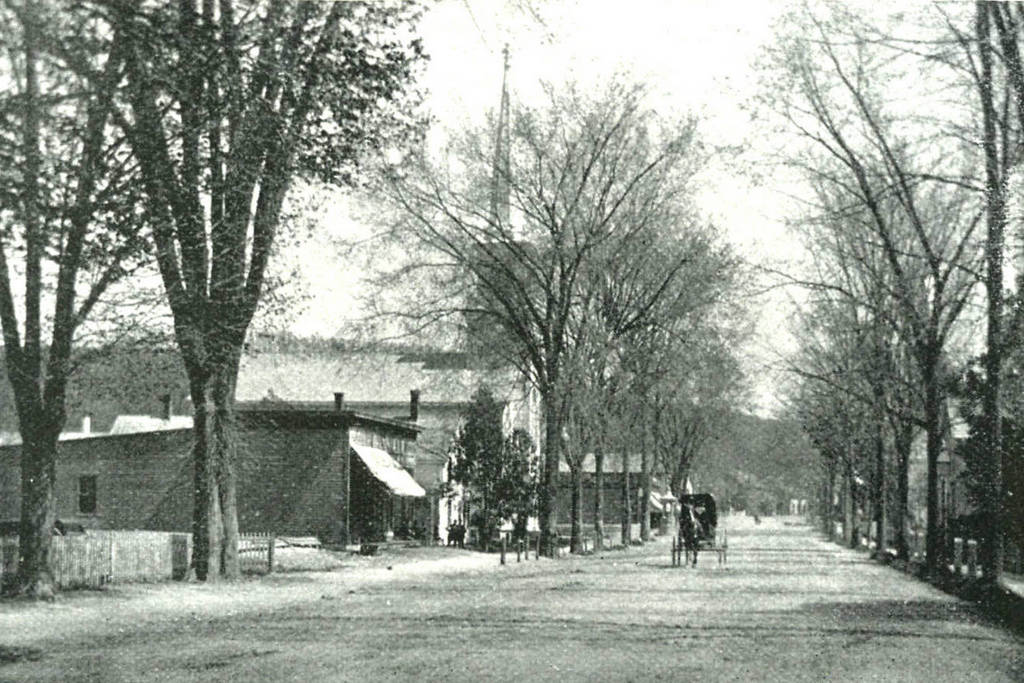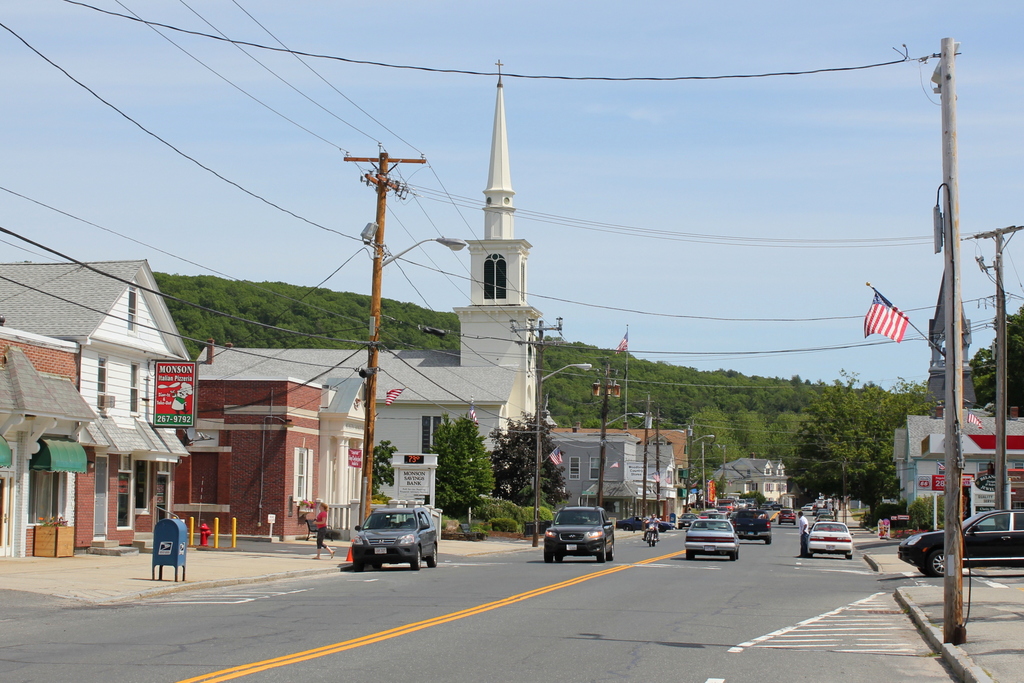The West Suffield Congregational Church, at the corner of Mountain Road and North Grand Street in Suffield, around 1920. Image from Celebration of the Two Hundred and Fiftieth Anniversary of the Settlement of Suffield, Connecticut (1921).
The church in 2015:
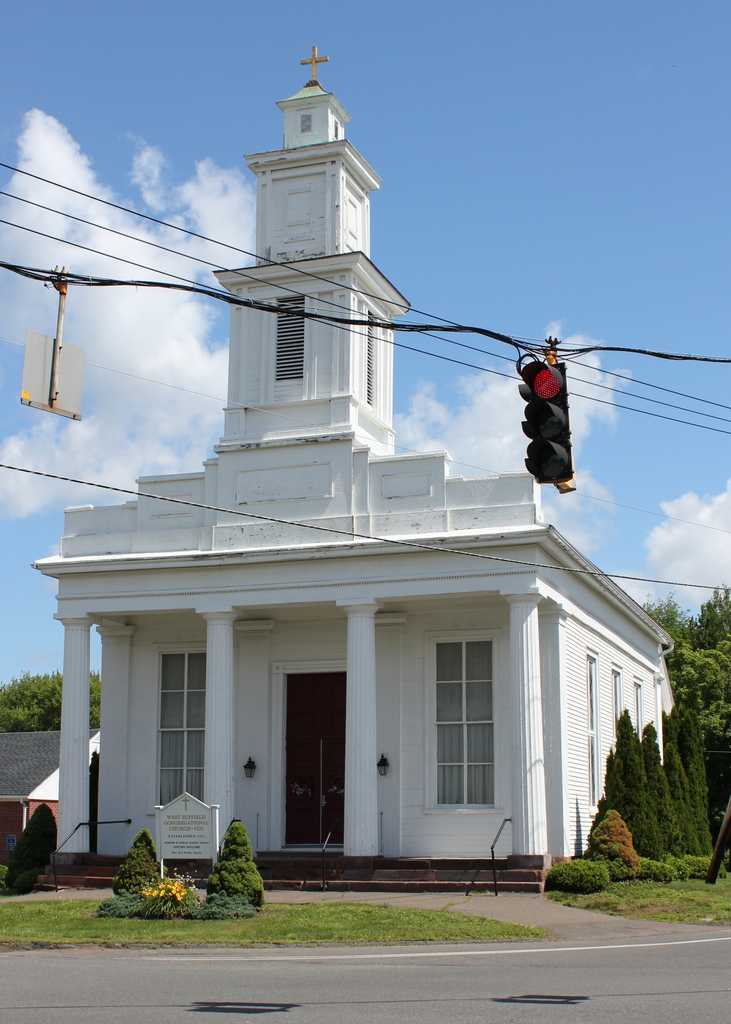
The West Suffield Congregational Church was established in 1740 by the Massachusetts General Court (at the time, Suffield and several other northern Connecticut towns were part of Massachusetts), and the congregation was organized three years later. The first pastor, John Graham, served for 50 years, ending his ministry in 1796, around the same time that the original building was replaced. The second building was completed in 1795, and sat on the same spot as the present-day building.
The second pastor of the church, Daniel Waldo, was perhaps the most remarkable in the long history of the congregation. He was born in 1762 and served in the American Revolution at the age of 16. Following his graduation from Yale, he became the pastor here, and served from 1792 until about 1810. After leaving Suffield, he served as a missionary in Pennsylvania and New York, and was the pastor of several other New England churches before being named Chaplain of the House of Representatives in 1855, at the age of 93. He served as chaplain for two years, but he didn’t really retire afterward; he continued preaching even beyond his 100th birthday, and he died in 1864, a little over a month before he would have turned 102. He was among the last living veterans of the American Revolution, and was one of the few to have been photographed, seen here shortly before his death:
The third, and current church building was built in 1840, on the foundations of the second building. There have been several additions behind and to the left of the building, in 1879 and 1958, but the main part of the building hasn’t changed much, aside from a different paint scheme, since the first photo was taken. The congregation is still active here after over 270 years, and they are part of the United Church of Christ denomination.


